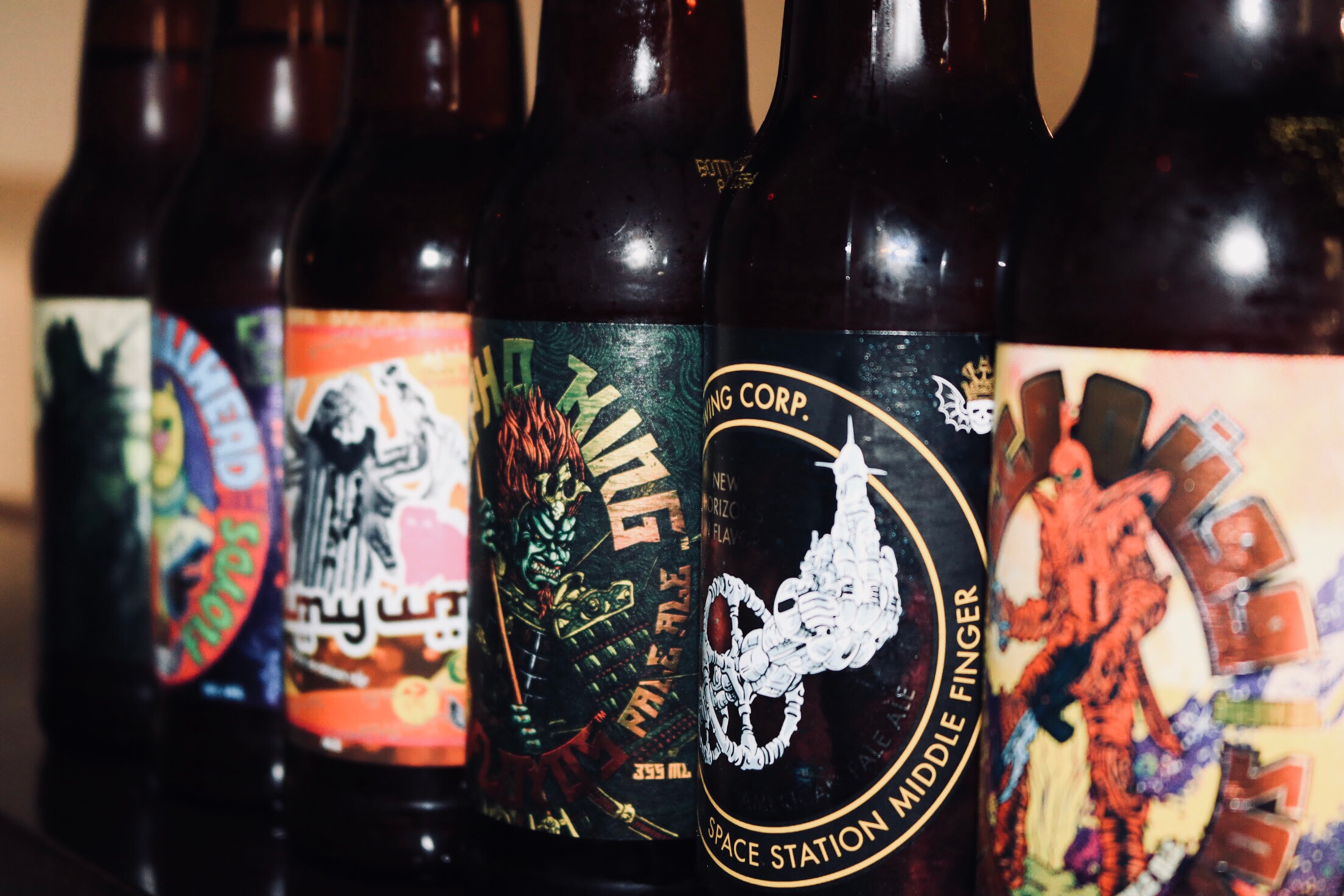
I appreciate any book that can show the familiar as new, or vice versa. Helping to explain how and why things came to pass, that their creation was a contingent event provides a refreshing and sobering reminder of things need not be accepted as they appear. Grounding extant objects in historical context helps to enliven their meaning and meaningfulness. We are given an opportunity to appreciate items on multiple levels, contextualize the aesthetic or functional aspects, even of a beer vessel, in a larger social narrative.
With an increased attention to what we drink it was only a matter of time before perspectives of all kinds would come to the fore, digging into all aspects of the experience, from history, to its creation, right up to the delivery and packaging. Beyond the how of deliciously crafted beer we have the who we enjoyed it with, the where of imbibing, as well as when it was appreciated. Additionally, there is the manner of presentation. This is a prominent and enticing part of the journey, especially early on when the novelty of differently shaped and variously sized glasses, tap handles, bottle and can dimensions, label designs and growlers, seem infinite. In the beginning, this exotic mix of visual packaging plays a prominent roll in the discovery process only to fall from view as we habituate to the stimulus. The packaging alone hardly remains of primary concern for most of us.1
For the more visually inclined and/or those looking for an added way (what is old is new again) to appreciate their beer of choice Oh Beautiful Beer by Harvey Shepard is a concise and rich resource to ground you in the physical and aesthetic dimensions of various beer vessels and label design. The topic is given a wide scope by way of historical context. Each chapter highlights a particular physical feature (e.g. label, bottle, glassware), providing historical references, occasional etymological roots and present day examples, tying the past to the present.
A ton of material is captured in a deceptively straightforward appearing book. Beautiful Beer may be read front to back, in parts as desired, or serve as a coffee table book on the strength of its images alone. While carrying a light mood the author takes its subject matter, design, and its reader seriously in the best possible way, by laying out an appealing topic in an attractive and essential manner.
The book explicitly calls out the beauty to be found in beer designs. Staking this claim puts pressure on the author to deliver on that premise. Whatever pressure the author may have felt in delivering on this claim is not passed onto the reader. The layout, presentation of historical material, coupled with images, makes for a well laid out and casual presentation. The author makes it look easy, belying the quantity of curated material. This is done through chronological storytelling that creates natural groupings for sharing the information. Within this ordering the book touches upon a variety of topics. Take the increased use of glass bottles and beer distribution. We are presented this as a process that was pushed along by the repeal of the glass tax in England (1845), the discovery of pasteurization (1876) and the coupling with the growth in the American railroad system which sparked a “boom in distribution.” In just a few sentences the book touches on regulation, science, technology and business practices. This is an example of the concise storytelling that the reader can expect.
The words are sparse yet essential, each one counting, as in a proper short story. The images are here to sparkle the eye but without context we would not fully appreciate what we were looking at. The author does away with the problem by contextualizing the examples, while not overwhelming us with unnecessary information. This is reminiscent of walking a gallery and reading the accompanying placards to the pictures hanging on the wall. Other beer vessel elements, such as beer caps, cans, can tabs and, of course, the labeling itself, receive similar treatment. Consider this book a primer to beer design visual literacy.

It is easy to assume things have always been the way they are. Even when something new happens or comes along we can believe that the manner in which it happened was inevitable. History is a good teacher for reminding us how things have been and how they could have been otherwise. With beer drinking vessels we can be forgiven for not looking too far past our noses. Arguably there are more important things in the world, we are tired from a long week, and we are part of the habituated environment. We do not see the water for already being immersed in it and swimming. Let beer and its various drinking containers be a reminder of how the things we take for granted came about due to multiple forces, each a contingent influence on our current environment. Let us also not forget that as our present is contingent so is the future. Another way to view our current artifacts is as answers to problems, whether one time, recurring, invented, or appropriated. Examples of each can be seen from the pint glass to the bottles, from coasters to cans.
We have arrived at a market that demands beer producers to stand out more than ever. There are more options than ever before, each fighting for attention and our wallets. To suggest that anything beyond the utilitarian use of a beer container is frivolous may be accurate on some measure but misses the point and too steeply discounts our species’ desire for status and reliance on visual cues. Putting these two together it is no wonder that the packaging plays what may be perceived, at first, as an oversized role in brewery success.
With more options than ever it is an exciting time to be a consumer, producer, and seller of beer. With thousands of breweries and tens of thousands of beers there is a niche out there for every drinker and if there is not yet perhaps you have just found your next business opportunity. In this drive to sell new, great beer the toughest part may be getting noticed. Sure, a local brewpub can do some business on its community ties but if it is going to thrive, and not just beyond the local but also across time, within its area it will have to stand out on a consistent basis and get noticed, given a try and give a reason in return for the drinker to come back. Not all interactions happen at a brewpub, across the bar from a friendly face. Many of our beer interactions are in the form of window shopping or perusing.
Similarly to how bookworms enjoy scanning the shelves of bookstores, beer geeks walk the store isles for the new and the familiar. One way to literally stop us in our tracks is to catch our eye. The designs on bottles and increasingly on cans are doing just that. We have examples of bright colors, nuanced designs, different sized and shaped containers, mix and match, six packs and the increasingly four-can set up. In this drive for attention and shelf space, we are likely to see an explosion of creativity. It is a diversity like no other before and through sheer trial and error alone some evolutions will be hit upon that gain traction.

For all of the finely interwoven storytelling I was left wanting one additional perspective, the forward-looking one. Difficult as it is to connect the dots looking backward, at least the events are set. Arranging and connecting the disparate objects takes time, attention and effort. The author should be applauded for doing all of these things, and doing them well. So this is more ofh a complement than a criticism, nitpicking a bit, to point out this small gap. It is not as if we would have to hold him to anything approaching a prediction but some general trends and even longshot options would have been appreciated and nice to consider. Elements of this are present within the current text (on cans alone, see tab opening, widemouth, and the 360° design) but a chapter dedicated specifically to future developments would have been very welcome.
Part of this forward-looking could have entertained previously attempted marketing attempts by beverage companies that had fallen flat, part could have looked at general food and beverage development for hints at what could come, inspiration could come from changing demographics, living situations and incomes. The fact that craft beer has become an international phenomenon would lead one to imagine that the drive to change are inevitable, just a glimpse at how other cultures have expressed themselves could havve been leveraged. The changes keep coming and whereas they may have taken hold every couple of decades we may anticipate that the changes will come more frequently with more players on the market. At the moment it is unclear what will take hold and where the next new/big idea will come from, only in retrospect will we be able to see the winners of new designs as inevitable.
This is a title worth grabbing and digging into. The layout is clean and clear, the intentions are fulfilled from one chapter to the next and the book allows for a different kind of springboard into one of our favorite topics. Taste is king but we are open to influence when it comes to how we perceive taste. The aroma, flavors, temperature and setting have a lot to do with it, as does the packaging and presentation. Beautiful beer provides a supplementary way for complementing the drinking experience.
Notes
Smoke Photo by rawpixel.com from Pexels
Pencils Photo by Joanna Kosinska on Unsplash
Labesl Photo by sydney Rae on Unsplash
1 Though in the beginning many seem to keep around bottles or glassware as forms of trophies. ↩